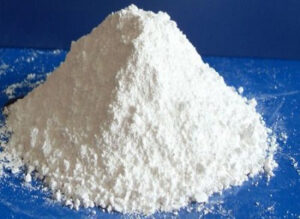Zinc oxide market forecast with a CAGR of 5.35 percent through 2030
Pune, India – According to the ChemAnalyst report, “Zinc Oxide Market Analysis: Plant Capacity, Production, Operating Efficiency, Technology, Demand and Supply, End User Industries, Distribution Channel, Regional Demand, 2015-2030,” the global zinc oxide market witnessed a steady growth in the historic years and is growing at a healthy CAGR of 5.35 percent until 2030 owing to its utilization as additives in various end use industries.
Zinc oxide is an organic compound that is insoluble in water but dissolves in most of the acids. It appears as a white powder with no odor and decomposes into Zn vapors and O2 when exposes to high temp and standard oxygen pressure. Naturally it occurs as mineral zincite, therefore most of the zinc oxide is synthetically produced. Industrially, there are three main process to produce zinc oxide namely fresh process, wet process and American process. Among all these methods, fresh process is the most extensively used process globally. Zinc oxide is segmented into four grades such as standard, treated, FCC (food chemicals codex) and USP (United States Pharmacopeia).
Zinc oxide finds application in various industries such as rubber, paints and coatings, plastics, cosmetics, adhesives, sealants, ceramics, food additives, fire retardants, lubricants, ointments, glass cement, pharmaceuticals, metal processing, etc. The rubber industry consumes more than half of the total zinc oxide produced globally for rubber vulcanization. In cosmetics and in the pharma sector, it is utilized widely in ointments, lotions and creams for protection against skin damage due to UV and sunburn. Additionally, baby powder or creams to treat rashes, anti-dandruff shampoos, antiseptic ointments and calamine cream comprise of zinc oxide in their formulations.
Based on its diverse utility, major end use industries for zinc oxide are automotive, building and construction, personal care, healthcare, food and beverages, metallurgy and others. Rising demand for zinc oxide in the rubber industry from tires as fillers or activators of rubber compounds coupled with the never ending demand from healthcare and personal care is expected to fuel the zinc oxide market over the forecast period. However, zinc oxide fumes can cause some health hazards in humans, as well as its insolubility in water adding some environmental hazards. These aforementioned factors are some major challenges for the zinc oxide market.
In the first half of 2020, the unprecedented spread of COVID-19 across the globe caused nationwide lockdowns and trade restrictions which directly impacted several industries. Automotive is one of the most affected sectors during the pandemic which consequently declined the demand for zinc oxide from the tire and rubber industry; though there was a constant demand for zinc oxide from healthcare and personal care even in the pandemic. Moreover, after the relaxation in lockdowns along with the resumption in industrial operations, automotive, construction and other end use industries recovered at a speedy pace and are expected to swell up the demand for zinc oxide in the forthcoming years.
Asia Pacific region dominates the global zinc oxide market and is anticipated to grow significantly through 2030 owing to the booming end use sectors such as automotive and healthcare, along with building and construction. Its increasing consumption in the tire industry and the presence of giant manufactures of tires such as Bridgestone (Japan), Sumitomo (Japan), Hankook (South Korea), Yokohama (Japan), ZC Rubber (China), Sailun (China), Apollo (India), MRF (India), Maxxis Tires (Taiwan) in the region are anticipated to boost the market for zinc oxide in Asia Pacific subsequently in the forecast period.
The zinc oxide market in North America and Europe are also estimated to propel at a substantial rate in the forthcoming years owing to the presence of giant manufacturers of rubber and tires.

